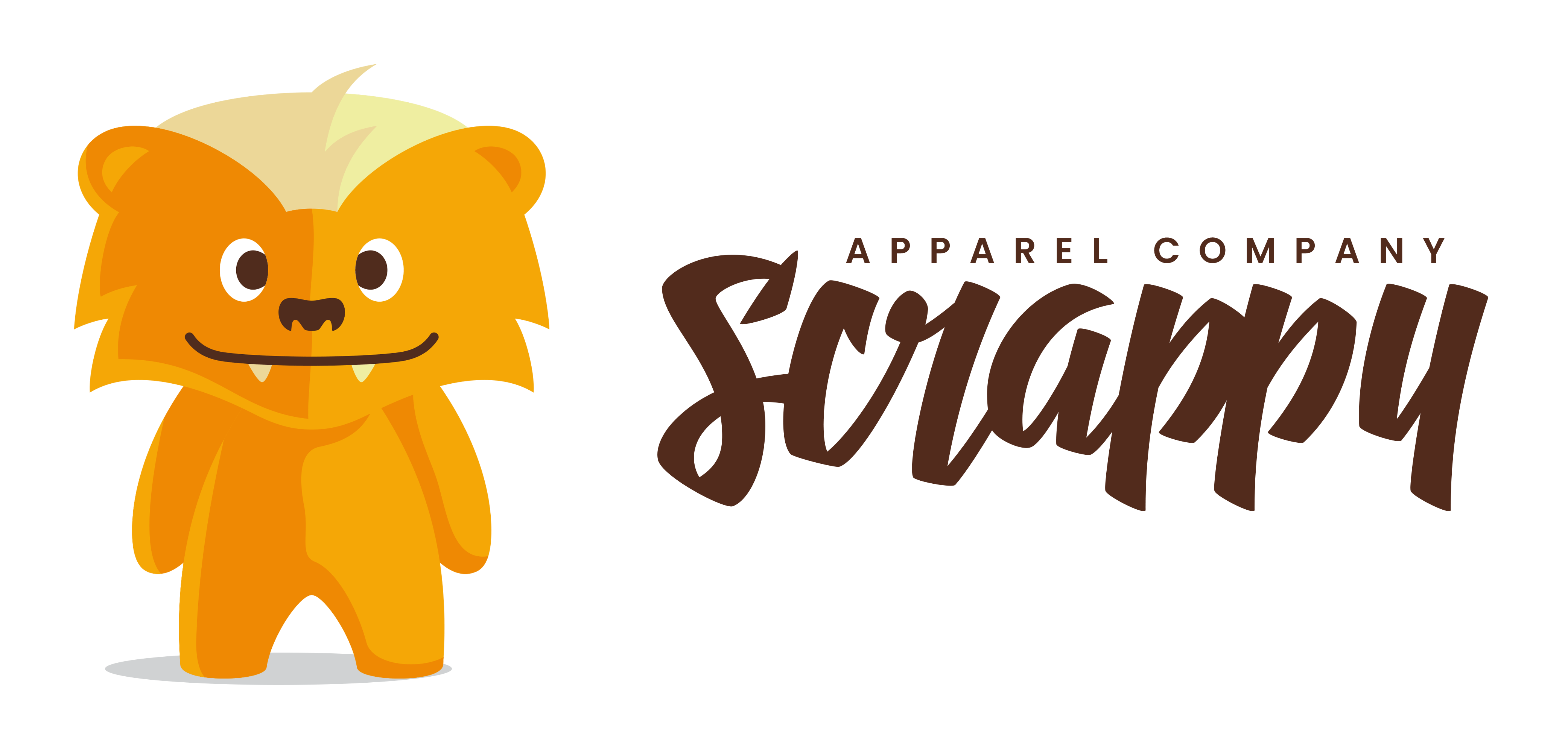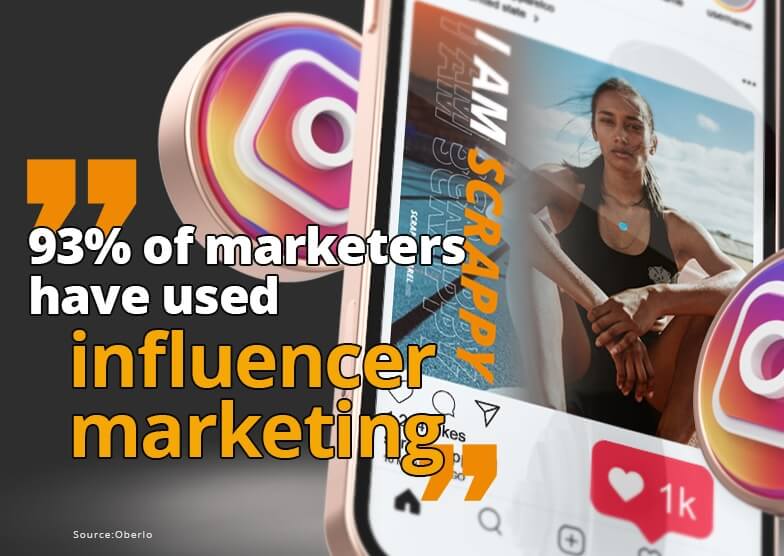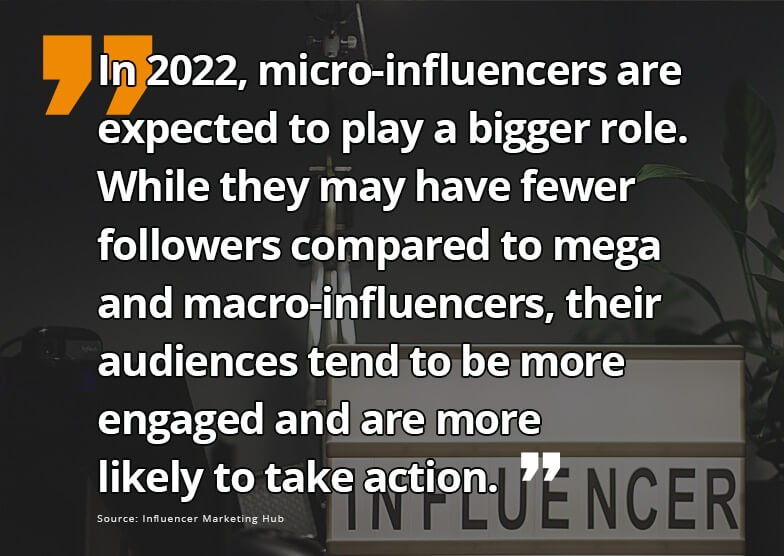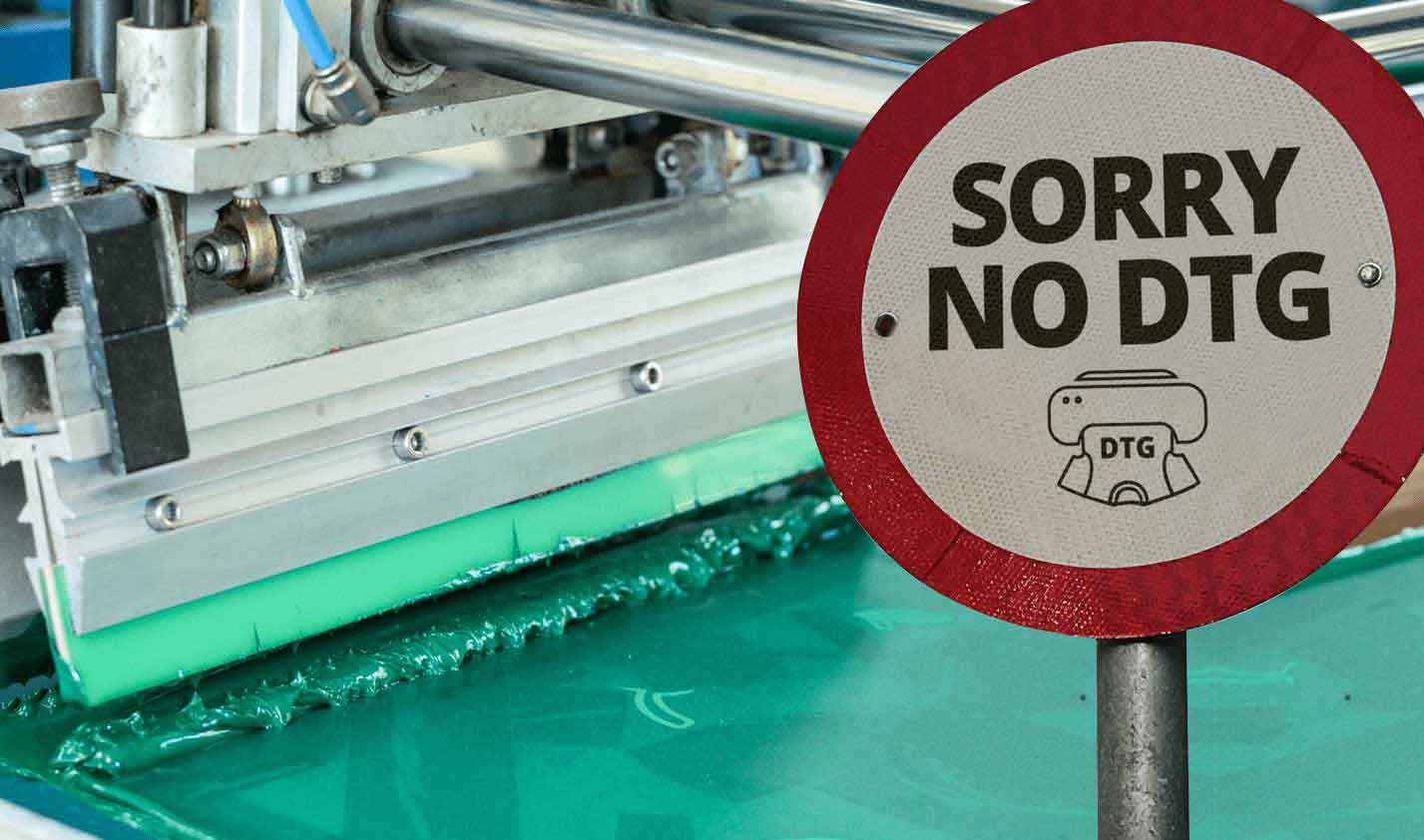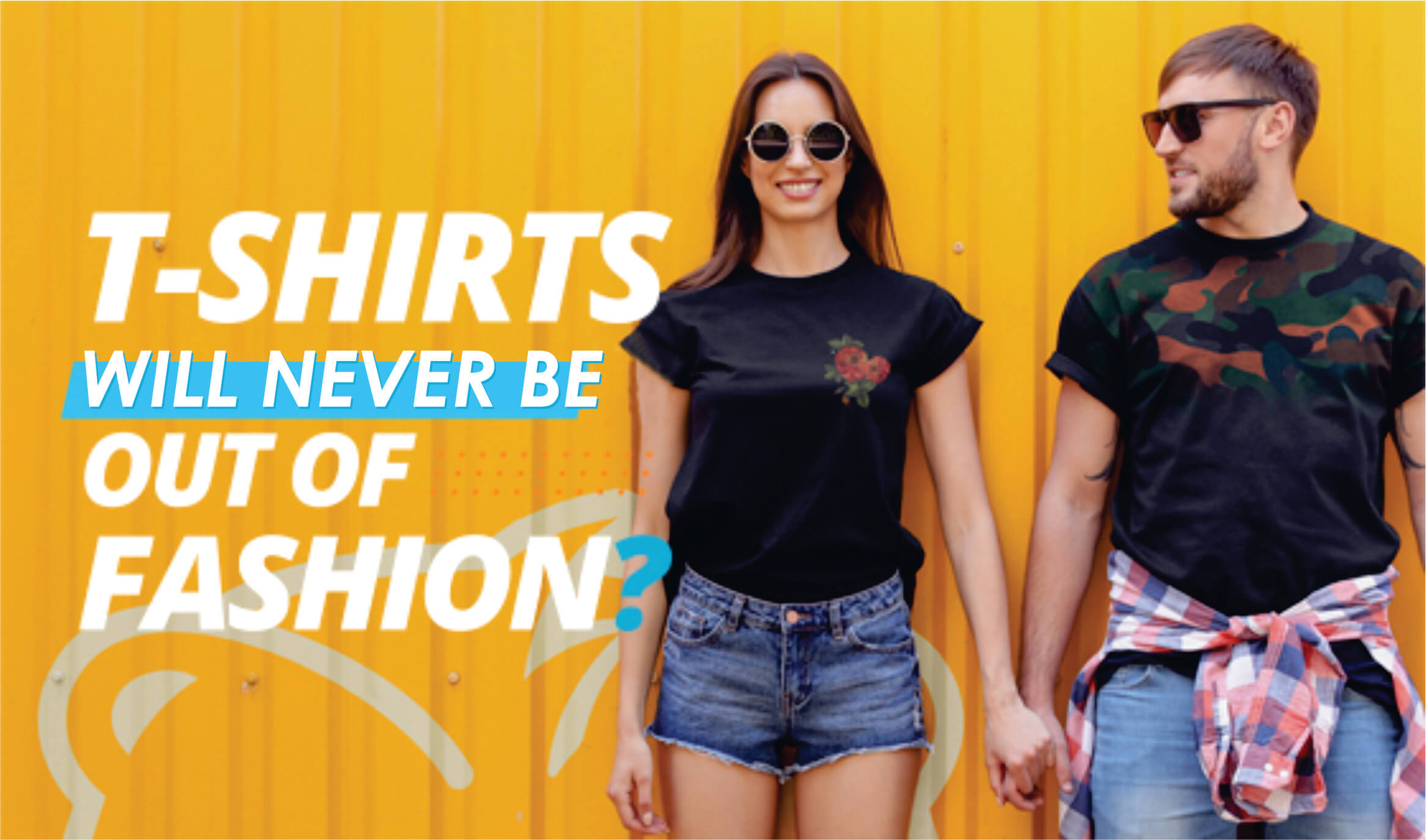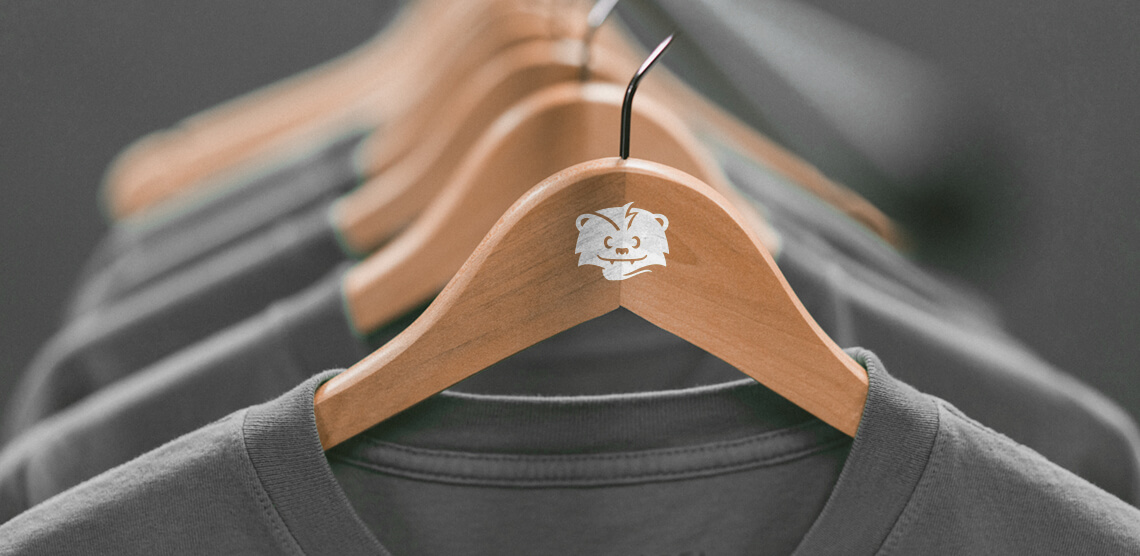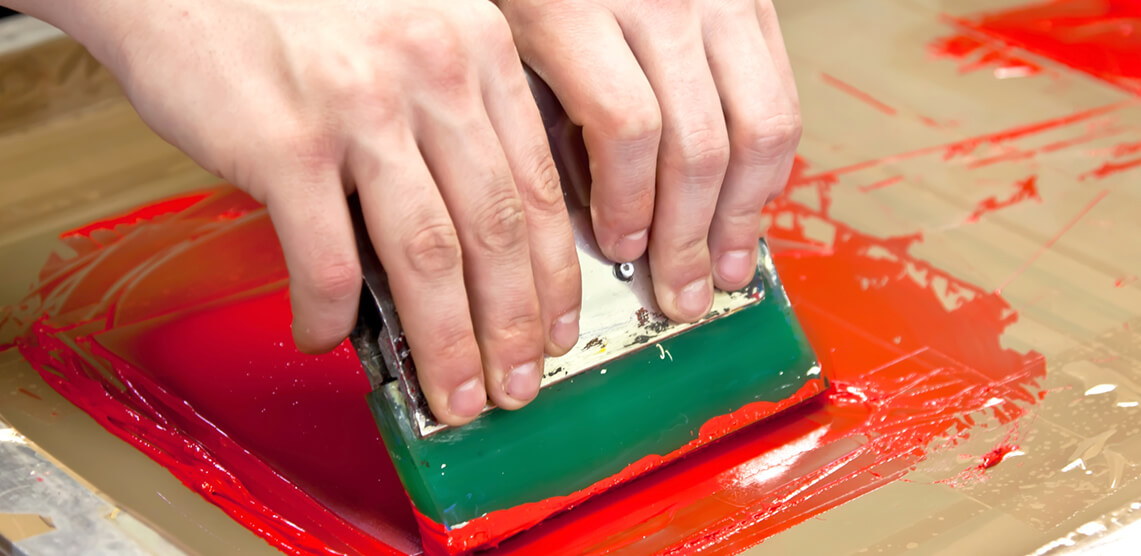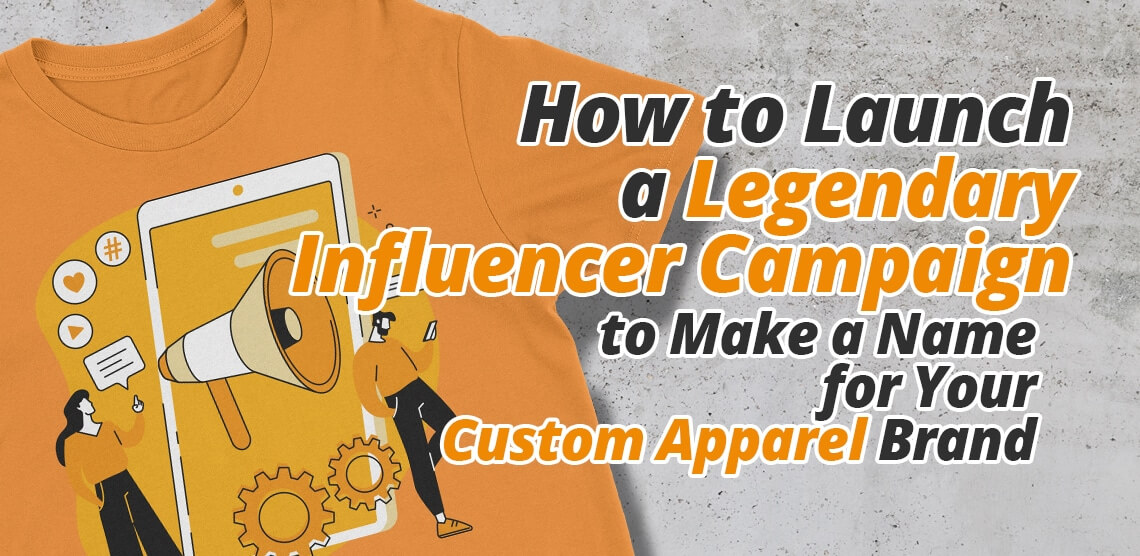
When you hear the word “influencer,” you might think of a modelesque, 20-something-year-old woman who is obsessed with Instagram, Photoshop, and portraying her “best life” online.
But there’s more to influencer culture than pretty Instagram pictures. Influencer marketing is a strategy that can grow awareness and drive sales for your custom apparel brand.
In 2019, the term “influencer” earned a coveted spot in the Merriam-Webster dictionary—but should an influencer campaign have a place in your marketing playbook?
We think so, but it all comes down to proper planning and execution.
Today, we’re sharing our expert guide on how to launch a successful influencer campaign, even if you’re working with limited marketing knowledge and a shoestring budget.
Influencer marketing 101: Let’s take it back to the basics!
We’ll start off with some rapid-fire questions and answers that clear up the most common doubts people have about influencer marketing—and of course, we will look at the strategy through the lens of a custom apparel brand.
Sounds good? Let’s dive in:
Q: “What is influencer marketing?”
Influencer marketing is a strategy in which brands pay online creators to post content about their products, services, or campaigns. It’s that simple!
Q: “Who is using influencer marketing?”
TBH, just about everybody. 93% of marketers have used influencer marketing in their campaigns.
The real question is, “Who isn’t using influencer marketing in their campaigns?”
Q: “How are influencers different than celebrities?”
Unlike celebrities, influencers aren’t usually household names. Instead, influencers have clearly defined niche audiences that are attractive to brands that fall within a similar category.
Although celebrities are also influential, their audiences are less targeted—so, an influencer with a smaller audience can provide more value to a brand if their audience is aligned with the brand’s target market.
Q: “What are the different types of influencers?”
According to IZEA (a.k.a. the influencer network giant), here are the influencer tiers:
- Nanoinfluencers: 1,000 to 10,000 followers
- Microinfluencers: 10,000 to 50,000 followers
- Mid-tier influencers: 50,000 to 500,000 followers
- Macroinfluencers: 500,000 to 1,000,000 followers
- Megainfluencers: 1 million to 5 million followers
Q: “Why would I choose to work with a microinfluencer over a megainfluencer? Isn’t more followers better?”
No, more isn’t always better. SHOCKER!
Microinfluencers are often at the community-building stage of their careers, which can lead to better relationships, engagement, and overall results for your campaign.
A microinfluencer with 10,000 followers can produce better results for your campaign than a megainfluencer with 1 million followers.
Sure, megainfluencers might have huge numbers of followers and likes on their posts, but that won’t necessarily translate to more sales.
Take it from Influencer Marketing Hub:
“In 2022, micro-influencers are expected to play a bigger role. While they may have fewer followers compared to mega and macro-influencers, their audiences tend to be more engaged and are more likely to take action.”
The bottom line: You really have to analyze potential partners on a case-by-case basis to figure out who will be the best fit for your campaign.
Q: “What makes an influencer a good fit for a campaign?”
There’s no one-and-done answer to this question, but here are the top criteria on our influencer wishlist:
- An authentic following—Duh. No fake likes or followers, please!
- An audience that matches the brand’s target market—Because reaching the right people is muy importante.
- High-quality content—This is also a given. No low-res, grainy images allowed (unless that’s the aesthetic, of course).
- Video capabilities—Although this isn’t a hard and fast requirement, video is the top-performing content type on social media today, so who wouldn’t want to tap into it?
Q: “What kind of budget do I need for an influencer campaign?”
Influencer campaigns can work for a budget of any size.
Q: “Can influencer marketing work for small custom apparel brands?”
Definitely, but you need the right strategy—which we’ll get into in a few minutes!
Q: “Is it authentic to pay an influencer to promote a product?”
Yes, as long as you give the influencer the creative freedom to produce content that aligns with their current online presence. You also want to make sure they are sharing their honest feedback on your product.
Q: “Are there any influencer marketing laws I should know about?”
100%. The FTC asks brands and influencers to clearly disclose their relationship when working on a campaign together.
Read more about FTC disclosures for social media influencers.
Q: “Which social media platform is best for influencer campaigns?”
The platforms you focus on will depend on factors like your campaign objectives and target audience, but we would recommend Instagram and TikTok as the best platforms for your first influencer campaign.
Q: “How do I measure the success of an influencer campaign?”
Before you begin, you will set clear objectives and key performance indicators (KPIs) to track the results of the campaign.
You can measure the results of each influencer using trackable links or unique discount codes.
Q: “What are the steps to launch an influencer campaign that drives ROI?”
We’re about to tell you, silly. Keep reading for our expert guide on how to set up and execute your own legendary influencer campaign!
Now that you’re an influencer marketing pro, let’s use your new knowledge to grow your custom apparel brand!
Here’s our free step-by-step guide on how to use influencer marketing to create buzz about your custom apparel and sell more shirts. (You’re welcome!)
1. Plan your campaign.
Whatever you do, DO NOT skip this step.
Decide on your budget and the number of partners you want to work with.
If your budget is small, we recommend working with a smaller number of partners so you can still find influencers who are a good match for your campaign.
Remember, quality over quantity is key!
Set your campaign objectives.
Your campaign objectives are simply what you want to achieve by investing your time, money, and resources into the influencer campaign.
For example, you might want to:
- Increase your sales
- Acquire emails or other contact information
- Encourage website visits
- Grow your social media following
- Boost engagement on your social media pages
This goes without saying, but choose objectives that make sense for your brand.
If you have no plans to use email marketing, it might not make sense to choose email list signups as one of your campaign objectives. Kapeesh?
Set your key performance indicators (KPIs).
Don’t worry, we’ll translate the marketing jargon for you.
A KPI is just a metric you use to measure the success of your campaign objective.
If your objective is to increase social media engagement, good KPIs to track could include:
- Number of overall followers
- Number of new followers within a certain date range
- Overall engagement rate (%)
You get the idea. You’ll want to set KPIs for your overall campaign and KPIs to measure the success of each influencer you work with.
Define your target audience.
It’s crucial to know who you want to reach. If your target audience is Gen-X men who are into mountain biking, you won’t choose a female Gen-Z beauty influencer for your campaign.
Select the platforms you want to focus on.
This will depend on your overall campaign plan, but like we mentioned earlier—Instagram and TikTok are safe choices because there will be lots of influencer partners to choose from.
2. Search for potential influencer partners.
Now is the part where your social media lurking skills will come in handy.
Here are a few places to find influencers to work with:
1. The good ol’ fashioned search bar
Seriously, you can just go to the search bar of your favorite social media platform and start typing in keywords relevant to your niche.
Over the past few years, Instagram has started prioritizing SEO to make its native search feature more accurate. So, take advantage of it!
2. An influencer marketing platform
These platforms do the legwork to find the best influencer partners for your campaign.
This option might be more expensive than doing the research on your own, but it’s a great way to delegate the entire influencer campaign to trusted professionals if you’re tight on time and resources.
Here are a few influencer networks that got our Scrappy stamp of approval:
3. Your current fanbase
Don’t overlook your existing network. You could have the perfect influencer partner in your audience already.
Look at your tags, mentions, and comments to find potential partners who are already fans of your brand.
How to evaluate a potential influencer partner
It’s up to you to decide which influencers are the best fit for your brand, but here are several Qs to keep in mind:
- Is their content good?
- Do they leverage video content?
- Does their existing content align with your brand?
- Do they fall within your niche?
- What is their follower count and engagement rate?
- Do they interact with their followers on a regular basis?
- Do they post consistently?
- Do their collaborations with other companies seem organic, or are they overly promotional and salesy?
3. Pitch influencers that are a good fit for your campaign.
You can email or DM potential partners. Both methods can be effective, but make sure you personalize your message with the person’s name and at least one sentence that is specific to them.
If you don’t, your precious pitch could end up in the trash! There are lots of scammers who copy and paste their pitches (because they’re focused on scamming as many people as possible) so you want to make sure that your pitch sounds genuine, thoughtful, and most importantly, HUMAN!
What to do if a potential influencer partner is interested
If you pitch an influencer and they express interest in collaborating with you, the next step is to share more information about your campaign.
For example:
- Deliverables—How many posts, which types of posts, etc.
- Requirements—Key messaging points, use of branded hashtags, etc.
- Campaign timeline—Deadlines, important posting dates, etc.
- Budget—How you will compensate the influencer for their work
We recommend being upfront with the important deets so you can make sure you don’t hit any bumps in the road later on.
It’s crucial to be transparent about the compensation so you don’t waste anyone’s time (including your own) if a certain partner isn’t a good fit for the scope of your campaign.
4. Secure contracts with influencers that match your needs and budget.
Your agreement will include all the campaign details, including the deliverables and compensation.
Hot tip: in your contract, ask the influencer for rights to use the content in future marketing materials, such as organic social media posts, digital ads, and email campaigns.
You can leverage your influencer campaign to build a library of stellar content to reuse later on.
Who needs costly photo and video shoots when you can work with influencers who will create tons of content for you?
5. Set expectations and coordinate campaign deliverables.
Create a campaign brief (a.k.a. a short, punchy document) that outlines all expectations for the campaign, including which product features to mention, which hashtags to use, when to post, etc.
The brief will ensure you are on the same page as all of your influencer partners. Clear expectations make it easier for you to hold your partners accountable.
6. Track the progress of your campaign.
If you have an ecommerce store, you can set up individual discount codes for each influencer to track the results of each partner. The person’s name usually works best as the code because it’s easy for followers to remember.
Keep your influencer profiles, deliverables, and notes organized in a spreadsheet so you can easily see who has completed what.
Don’t be afraid to follow up with your partners if they are running late or missed a step in the process you outlined for them. Remember, humans can be forgetful, so a friendly nudge won’t hurt!
7. Analyze the results.
Once your campaign is complete, it’s time to look back at the objectives and KPIs you set.
How did your partners measure up? Take note of the results and create a list of recommendations for future campaigns.
Want to print a custom t-shirt for your influencer campaign?
Partner with us, and we’ll make sure your custom apparel is always Instagram-ready.
